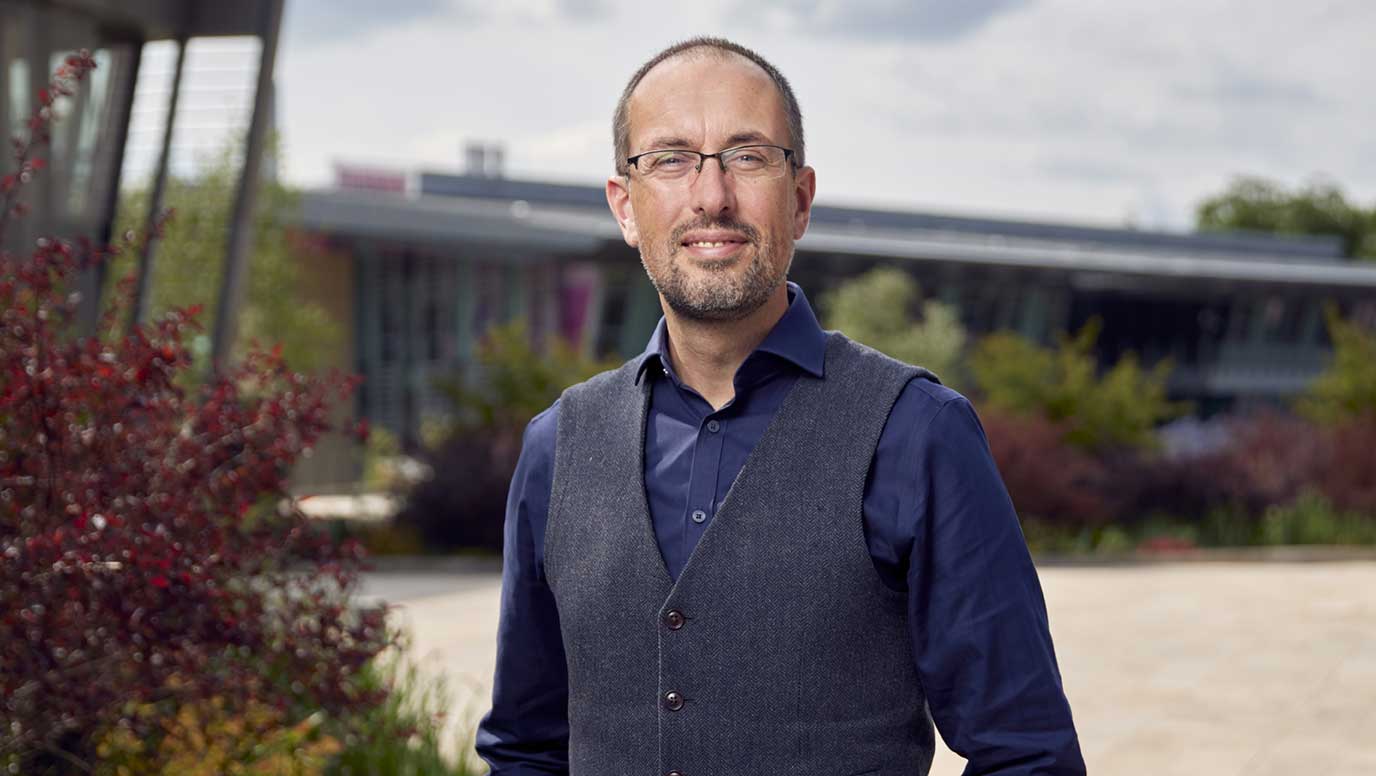Wellcome Sanger Institute pursues fresh frontiers to build on rich genomics legacy

The Silver Jubilee paled beside a golden vision of the future as Sanger Institute Director Matt Hurles today laid out the Institute's hunger to push the boundaries of discovery still further.
It was on June 26, 2000 that the first draft of the human genome was published, a historic achievement that changed the course of science.
Now experts at the Institute are looking ahead to how genomics will shape research over the next 25 years and what this means for global human and planetary health. Last October, in conjunction with Quantinuum and Business Weekly, Sanger scientists joined superchip champion Arm, Kao Data Centre and Oxbridge academics at the Cambridge HQ of law firm Mills & Reeve to explore how the Institute was using quantum computing to discover new research methods for genomics.
The Sanger Institute played a vital role in the Human Genome Project, contributing nearly a third of the sequence, and continues to be a world-leader in genomics. Looking ahead, the ambitious plans of the Institute include understanding the impacts of every single genetic change in the genome, using genomics to shape clinical practice, having a genetic record of all life on Earth, and helping to stop the spread of diseases.
Global collaboration and open science are crucial to ensuring that everyone benefits from genomics, and this anniversary also highlights how great science is only possible through collective effort. Founded on open access principles, the Sanger Institute will continue to lead in this aspect, ensuring that genomics is as equitable and accessible as possible.
Twenty-five years ago, it took almost 10 years to sequence the first draft human genome. Today, facilities at the Sanger Institute can sequence the equivalent of one gold-standard human genome every 11.8 minutes.
New sequencing technologies and methods will continue to produce high-resolution genomic data at scale. The application of artificial intelligence will help scientists in analysing, modelling and understanding these data to transform our understanding of biology and find novel ways to treat disease.
The future of genomics is wide-reaching and will develop as the world continues to change. For example, as the climate changes, the global disease burden will alter. Genomic surveillance is already starting to help track disease outbreaks, such as dengue fever, as it moves into Europe and will be a vital tool in pandemic preparedness.
On an individual level, genomics can revolutionise medicine and could help lessen the pressure on the NHS. Whole genome sequencing is now part of clinical care in the NHS, helping to inform diagnosis and treatment for rare diseases and cancer.
For example, last year Sanger researchers analysed the use of whole genome sequencing for childhood cancer and found that the gold-standard genomic test gave new insights that improved clinical care while reducing the number of tests required.
Ongoing projects that are mapping how the human body works at a molecular level could shed new light on how health conditions develop and highlight how to prevent or treat these. From predicting those who may be at higher risk of disease or could respond better to therapies, genomics can help inform personalised medicine approaches across all areas of health, from cancer to sepsis and inflammatory bowel disease.
Professor Hurles said: “The 25 years since the announcement of the completion of the human genome transformed our understanding of biology in both predicted and unpredicted ways. Now, we are looking to the future, applying the same collaborative approach to new, ambitious projects that aim to continue to build on the legacy of the Human Genome Project.”
Alongside technological and scientific advances, infrastructure will be key to shaping the future. To aid this, the Wellcome Genome Campus, home to the Sanger Institute, EMBL’s European Bioinformatics Institute (EMBL-EBI), and other genomic leaders, is expanding.
Over the next few years, the Campus will grow from 125 acres to 440 acres, delivering new lab space, homes and other amenities. This blueprint is one of the largest contemporary investments in the UK’s life sciences infrastructure and aims to attract global leaders in these fields and provide enhanced opportunities for this research to be translated into real-world solutions for health challenges.
John-Arne Røttingen, Chief Executive of Wellcome, said: “The Human Genome Project was one of the most significant scientific endeavours undertaken, leaving an extraordinary legacy that can be found right at the core of fundamental innovations that have improved human health and our understanding of disease.
“Wellcome established the Wellcome Sanger Institute in 1992 to contribute to the Project and our involvement was pivotal in ensuring the complete genome remained available and accessible to all who needed it, a global public good. We proudly continue to support bold discovery research, matching the same spirit of open collaboration, to advance the science needed for transforming health outcomes for people globally.”


